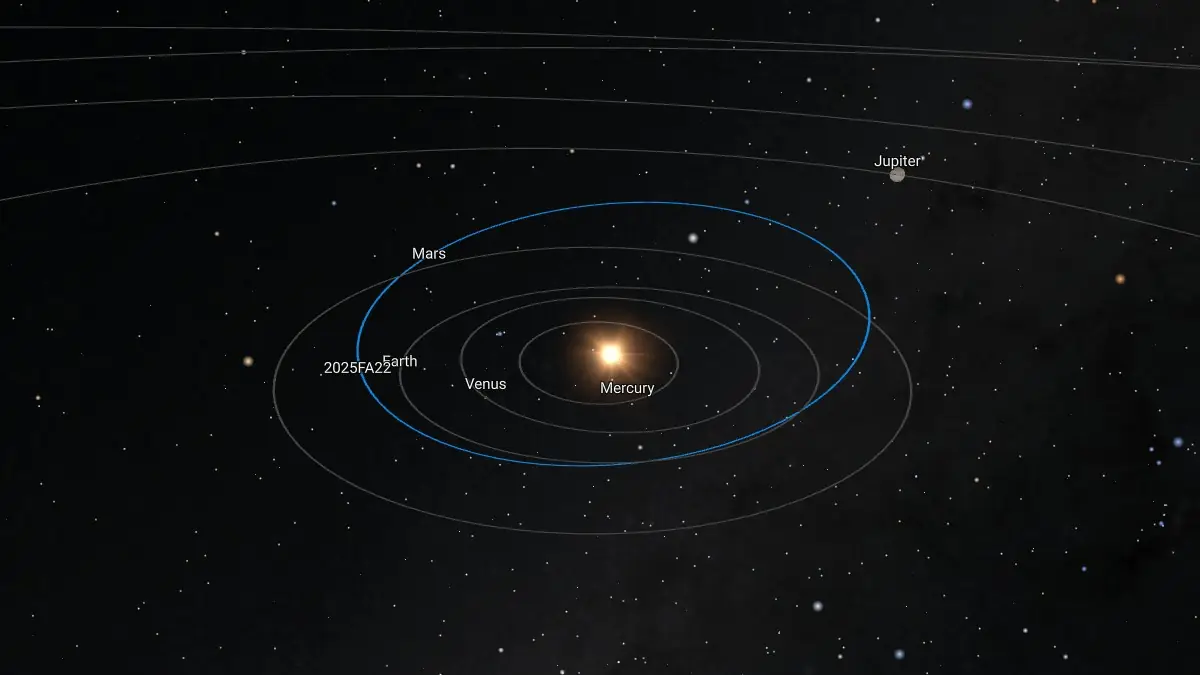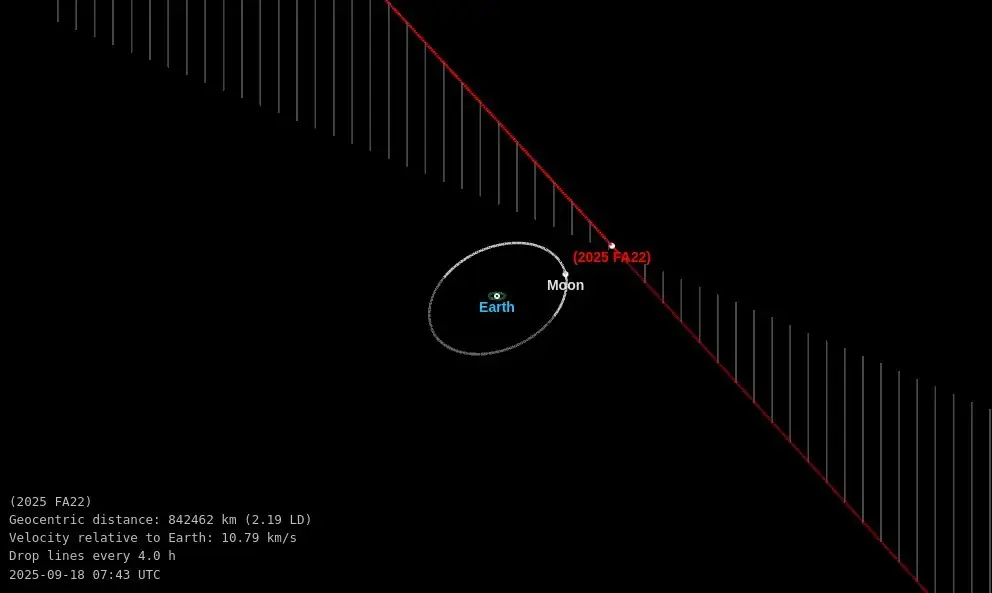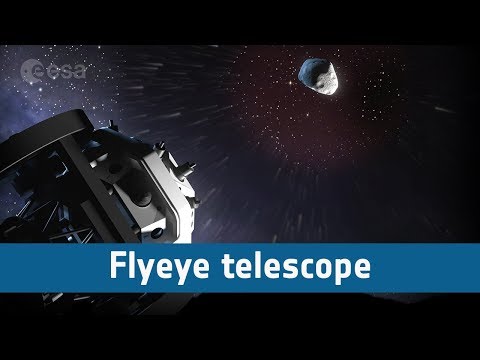Asteroid 2025 FA22 enters top 5 ESA’s impact risk list
A newly discovered asteroid, 2025 FA22, has climbed into the top five positions of the European Space Agency’s (ESA) risk list due to its low but measurable chance of striking Earth in 2089. During the first four months of 2025, more than 1 000 new NEOs have been discovered, in line with the recent average of about 3 000 per year.

Image credit: ESA/NEOCC
A newly discovered object designated 2025 FA22 has entered the top five positions of ESA’s risk list. The asteroid, approximately 200 m (656 feet) in diameter, was detected by Pan-STARRS 2 on March 29 and is currently assigned a 0.01% impact probability on September 19, 2089.
Its assessment on the Palermo Scale is above -3, and it is near the 0–1 boundary on the Torino Scale (very low but non-negligible risk).
The object belongs to the Apollo group of asteroids. Its next close approach will take place at 07:43 UTC on September 18, 2025, at a distance of 2.2 LD (0.005 AU).
The object remains observable for a few months, and additional data will likely clarify the impact scenarios soon, ESA said.

ESA reported that 1 006 NEOs were discovered in the first four months of 2025, aligning with recent annual averages of approximately 3 000. As of early May, the total number of known NEOs stands at 38 307 asteroids and 123 comets. Of these, 1 782 are listed on ESA’s risk list—an inventory of objects with a non-zero probability of Earth impact.
In other asteroid news, ESA’s first Flyeye telescope, designed to automate and accelerate asteroid detection, has entered the test and validation phase at the Italian Space Agency site in Matera.
The 1.0 m effective aperture telescope uses 16 optical channels and is being prepared for full system validation, including the integration of its data processing chain. Construction of the final observatory site at Mt. Mufara in Sicily resumed following a winter break, with deployment scheduled for 2026.
Mt. Mufara is a 1 865 m (2 838 feet) high mountain located within the Madonie Natural Park, just a few km from the observatory where Italian astronomer Giuseppe Piazzi discovered the first asteroid – the dwarf planet Ceres – in 1801.
I'm a dedicated researcher, journalist, and editor at The Watchers. With over 20 years of experience in the media industry, I specialize in hard science news, focusing on extreme weather, seismic and volcanic activity, space weather, and astronomy, including near-Earth objects and planetary defense strategies. You can reach me at teo /at/ watchers.news.



Commenting rules and guidelines
We value the thoughts and opinions of our readers and welcome healthy discussions on our website. In order to maintain a respectful and positive community, we ask that all commenters follow these rules.